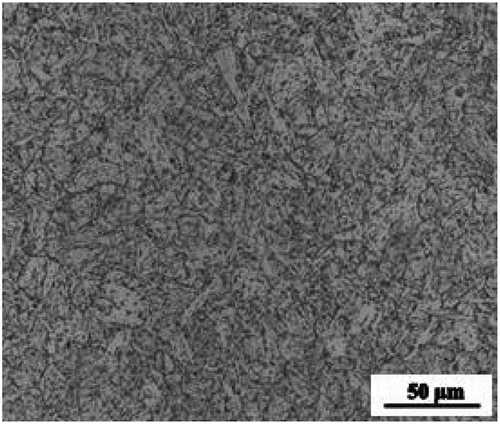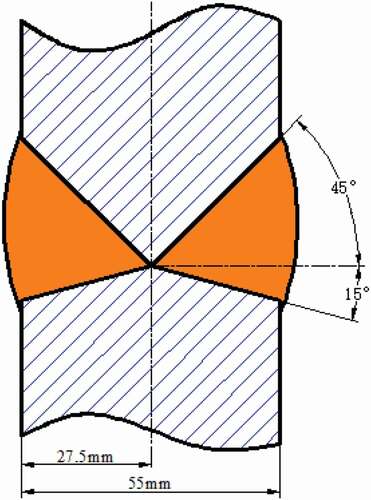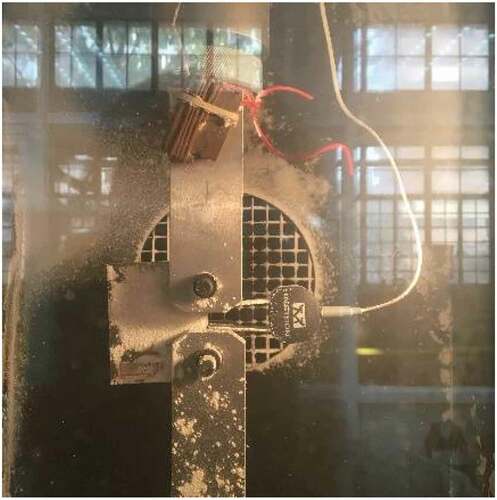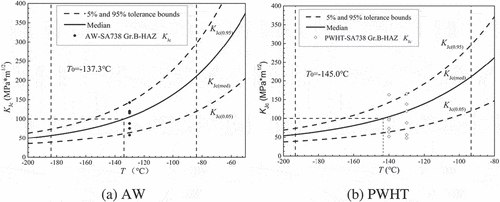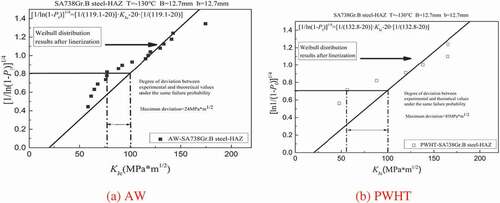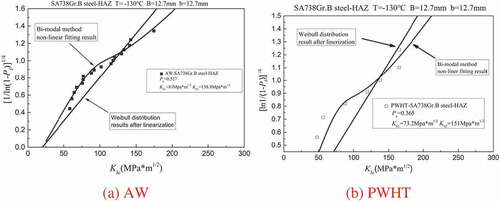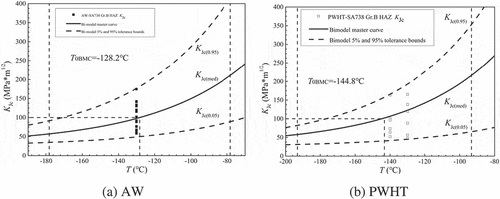Figures & data
Table 1. SAW experiment scheme of SA738Gr.B
Table 2. Fracture toughness test data
Figure 3. HAZ specimen sampling diagram. (a) Schematic diagram of 0.5T-C(T) specimen sampling in HAZ, (b) Heat-affected zone range metallographic map, (c) Machining groove in HAZ schematic, and (d) HAZ prefabricated fatigue crack specimen.
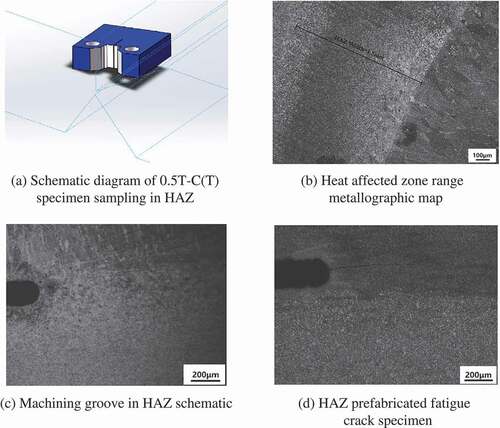
Table 3. Standard MC method to obtain the characteristic parameters
Table 4. BMC method characteristic parameters fitting values
Figure 9. SPE model master curve and its 5% and 95% upper and lower boundary curves. (a) AW and (b) PWHT.
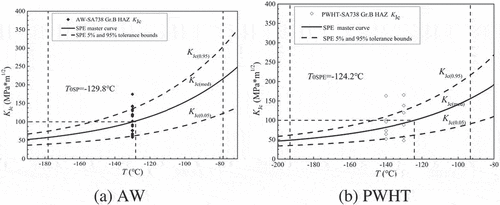
Table 5. BMC method characteristic parameters fitting values
Table 6. SINTAP inhomogeneity screening results
Table 7. HAZ fracture toughness characteristic parameters

